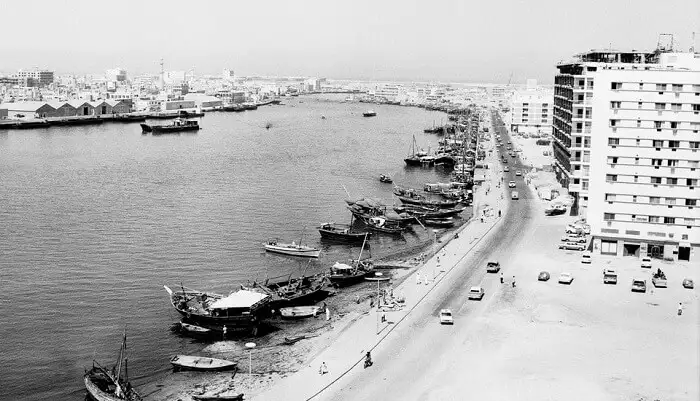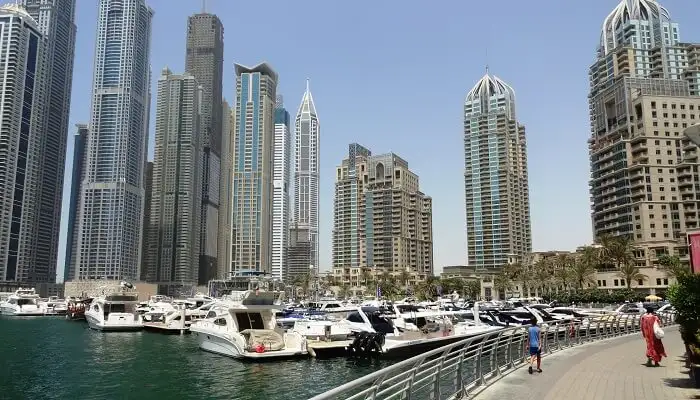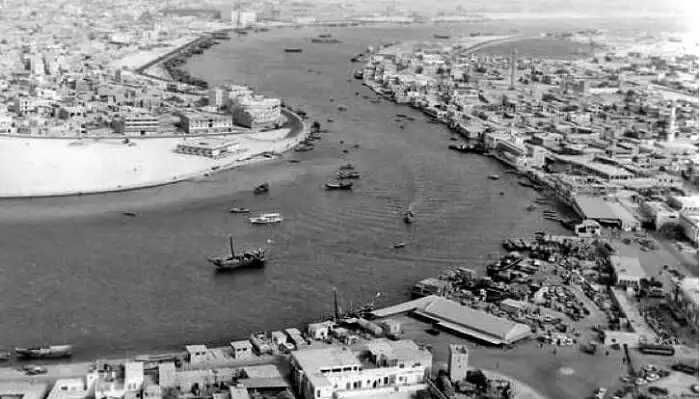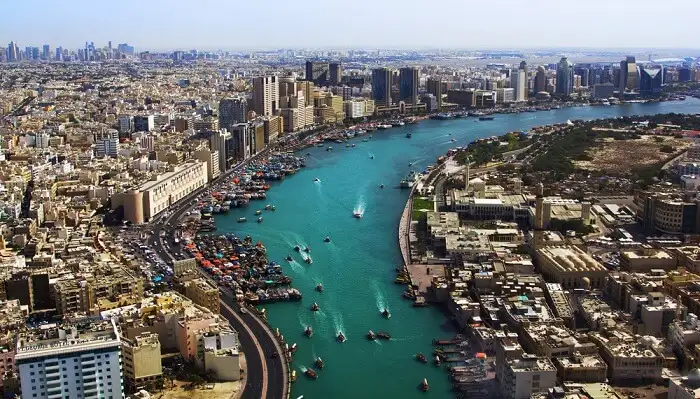Dubai
/
UAE

The Emirate of Dubai may be the wealthiest of the seven states that constitute the federation of the United Arab Emirates, which was created in 1971 following independence from Great Britain. Its capital city, also named Dubai, is the most populous in the Emirates, located on the southeast coast of the Persian Gulf.
Dubai is a city of skyscrapers, ports, and beaches, where big business takes place alongside sun-seeking tourism. Because of its large expatriate population, it feels like a Middle Eastern melting pot, and the atmosphere is generally tolerant. Religious affiliations are not a prominent aspect of city life. Islam is the majority religion, but churches and Hindu temples coexist with Dubai’s mosques.
Dubai started off in 1833 as a small settlement by some 800 members of the Bani Yas tribe, who were attracted to the natural harbour created by the creek flowing through Dubai. They turned the area into a small center for fishing and pearling. These people were later joined by the Arabian nomads of the Middle East called Bedouins. They too settled near the creek in small houses known as barastis.
During the 1960s, Dubai’s economy was primarily dependent on the revenues generated from trade and oil exploration concessions. The history of Dubai development shows that when a major chunk of revenue obtained from oil reserves started to flow in 1969, Dubai started developing rapidly. Vast sums of cash were thrown into the picture, and major infrastructure like schools and hospitals started developing swiftly. Over the years, it transformed Dubai into the glam and glitzy hub we know today.
These transformative years serve as the backdrop for The Falcon and the Shaikhs and The Duke of Dubai.
Historical Timeline
1830: The small fishing settlement of Dubai is taken over by a segment of the Bani Yas tribe from the Liwa Oasis, led by the Maktoum family, who still rule the emirate today.
1892: Foreign traders are drawn into Dubai due to the declaration that they will be exempt from tax, the population doubles, and the pearling industry is booming.
1930-1940: The recession hits Dubai’s pearl industry which falls into decline leading to social pressures and feuds between the royals.
1958: Sheikh Rashid officially becomes the ruler of Dubai after his father’s death.
1959: The Emir of Kuwait lends Sheik Rahid millions of dollars to renovate the Creek to accommodate large ships to develop Dubai’s reputation as a central trading hub.
1966: Dubai discovers its oil, attracting traders to settle in Dubai and enhancing economic growth.
1968: Dubai begins exporting crude oil, and petro-dollars rush in.
1973: Dirham becomes the official currency in Dubai.
1980: Dubai’s annual oil income decreases to US$3.
1985: The Emirates Airline is established, and Dubai plans its reinvention as a tourist destination.
1990: Sheik Maktoum takes over as the ruler of Dubai due to his father, Sheik Rashid, passing away during the first Gulf War.
1996: The Dubai Shopping Festival (DSF) and the Dubai World Cup are launched and become trendy annual events.
1999: One of the tallest hotels in the world, the Burj Al Arab, enhances Dubai’s reputation further as a tourist destination.
2003: Dubai is recognised by The International Monetary Fund and the World Bank as a financial hub. Also, at this time, the property market in Dubai suddenly grows due to the introduction of freehold properties.
2006: Sheik Mohammed becomes the Prime Minister and Vice President of the UAE and the ruler of Dubai. He updates the Liberal policies of his Maktoum forefathers and develops Dubai further, raising the city’s business profile.
2007: Sheikh Mohammed announces the Dubai Strategic Plan 2015, as well as the inauguration of Dubai Studio City takes place. Dubai World Cup prize money was raised to $10 million, and Dubai International City was built.
2008: New Maktoum Bridge opened along with Dubai Sports City and Dubai International Terminal 3. The Atlantis, The Palm Hotel & Resort is launched.
2009: Dubai Mall, the world’s largest shopping mall, is inaugurated, and Red Line (Dubai Metro) begins operations. Dubai International Cricket Stadium opens.
2010: Burj Khalifa, the world’s tallest skyscraper, opens, and Al Maktoum International Airport starts operating.
2011: Dubai Metro begins operating Green Line and Palm Deira station.
2012: Princess Tower and JW Marriott Marquis Dubai are built as Dubai bids for World Expo 2020.
2013: Dubai wins bid for World Expo 2020, and Sheikh Mohammed announces the Dubai Water Canal.
2014: Mall of the World, the world’s largest mall and indoor theme park, announced Opera Grand, the first high-rise in the Dubai Opera House District, opened.
2015: UAE develops Mars probe named Hope.
2016: Sheikh Mohammed inaugurates the Dubai Water Canal.
2017: Dubai Safari Park is opened to the public.
2018: Dubai Frame, World’s giant frame, opened in 2018.
2019: Construction of Burj Jumeirah commences.
2021: Ain Dubai, the world’s biggest and tallest Ferris wheel, located near the Dubai Marina, opened on 21 October 2021.
2021-22: Expo 2020 was a World Expo that took place in Dubai from 1 October 2021 to 31 March 2022.
2022: The Museum of the Future, an exhibition space, opens on 22 February 2022.
Luigi Falconi’s story is rich
with the history and feel of Dubai
in some of its wildest times.








